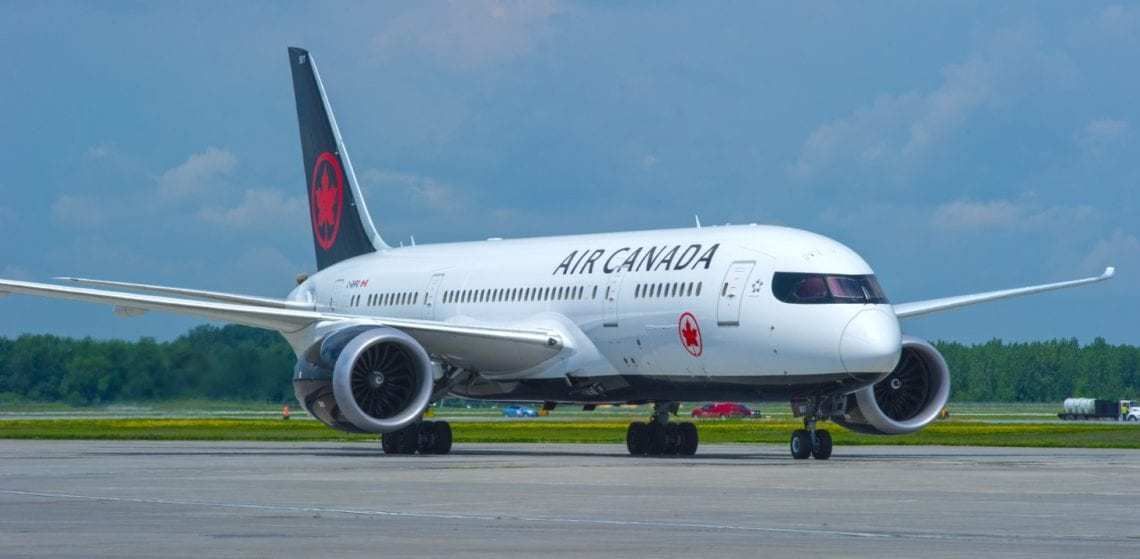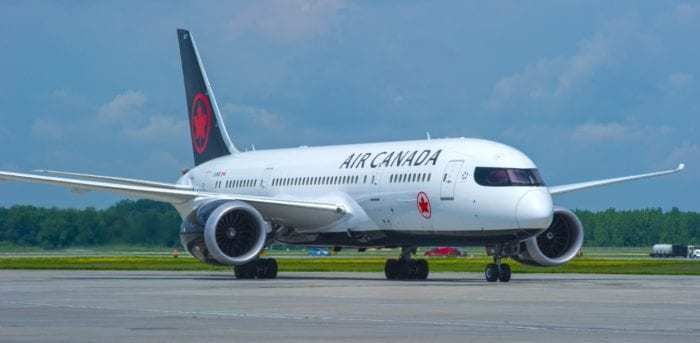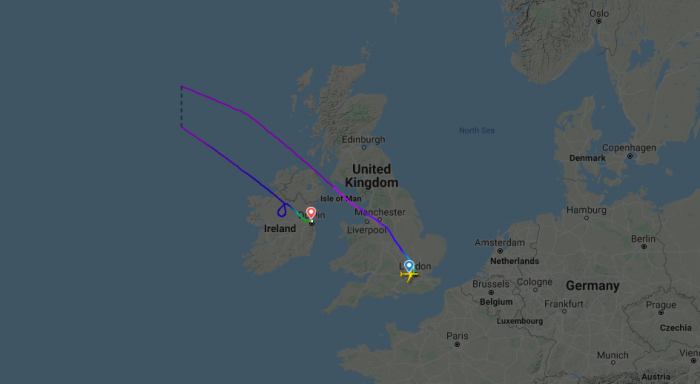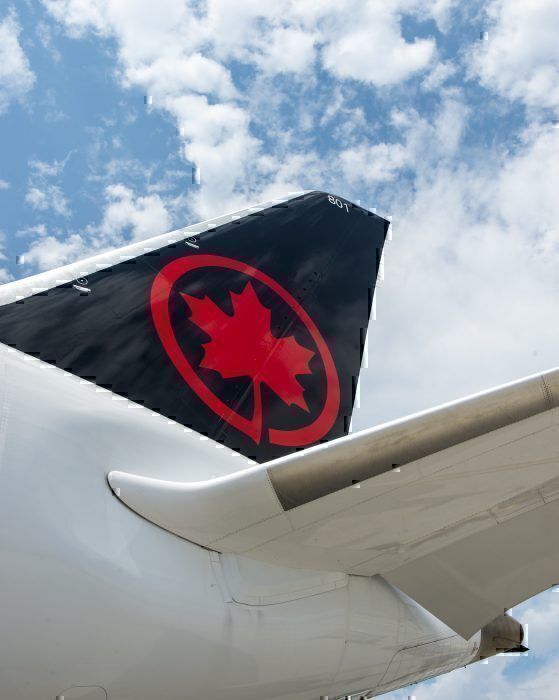An Air Canada flight on its way home from England was forced to land after their windshield cracked. The Boeing 787 was inbound to Toronto across the Atlantic when the incident occurred, and thus the aircraft had to divert to Dublin.
What are the details?
An Air Canada Boeing 787-8 with tail number C-GHQY was flying back to Toronto from London Heathrow (flight AC857) when a crack appeared in the cockpit window of the aircraft.
The plane was around 300 nautical miles northwest of Shannon, Ireland and was just about to make its way into the deep Atlantic (approx one hour into its flight) when the crack was noticed. The aircraft descended down to FL250, or 25,000 feet, and continued for approx 30 minutes longer until it was over Dublin airspace.
The aircraft, fully laden with fuel, proceeded to dump its excess for around 15 minutes in the countryside outside of the city. It was then allowed to land, safely cruising to a stop on Dublin's runway 10, approximately 55 minutes after reporting the incident.
What happened to the passengers?
Because the incident happened in the cockpit and the pilots took instant action, the aircraft was unharmed and the passengers only burdened with a delay of a day.
A replacement Boeing 787-8 was flown to Dublin to pick up the passengers the following day and continued with them to their home. It is unclear at this stage if the passengers were allowed out of the international area into Ireland.
The original Boeing 787-8 which had the issue with the windscreen sat on the ground for around 30 hours before being repaired and flying back to Toronto. It has since resumed regular service.
Why is this news?
This is, in fact, the second time in two months that a Boeing 787-8 flying Air Canada colors had a crack in its cockpit windows.
The first incident actually happened on a flight from Shanghai to Vancouver on the 1st of September this year, and the aircraft was forced to land in Tokyo. At the time, Air Canada declined to comment to media as to the cause of the cracks (and it is a bit mysterious what could cause a crack to appear on a windscreen at 39,000 feet) but we can't ignore the fact that this is the same incident to happen to the same airline with the same aircraft type (but different plane, C-FRSO).
Or perhaps a windshield at the front of the plane is actually the most common cracked part (with a list available here of all the Boeing 787s with cracks over the last year) due to the sheer amount of resistance, wind, and stress that part of the aircraft encounters.
Air Canada has been reached out to for comment, but as of the time of publishing this article, they have yet to reply.
What do you think about this news? Did the crew do the right thing? Let us know in the comments.




